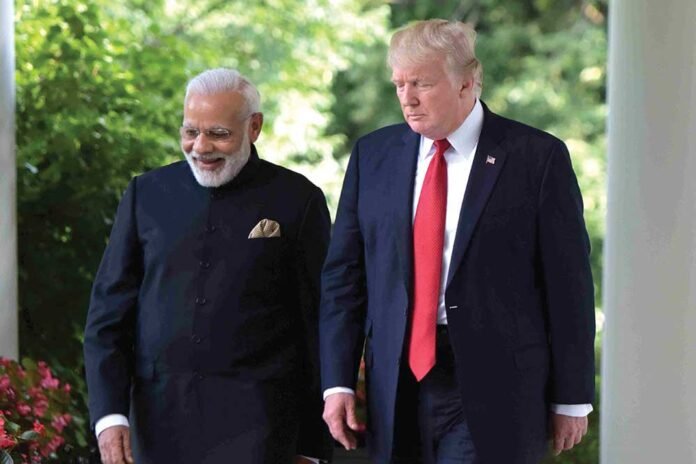in the rapidly evolving 21st-century global order, the question of leadership is more complex and contested than ever before. The post-World War II international system, shaped by US-led liberal hegemony, is in a state of flux. Amid this turbulence, India stands at a crossroads. It is neither a superpower nor a minor player, but it possesses unique attributes that position it as a potential strategic player on the global stage. India must seize this historic opportunity to shape the emerging world order — not necessarily as a hegemon, but as a pivotal actor capable of catalysing cooperation, managing rivalries and anchoring a more just, pluralistic and multipolar global system.
A Volatile World and the Leadership Vacuum
The international order that emerged after 1945 was established on the twin pillars of the United States’ military and economic dominance, and a liberal and rules-based framework that sought to promote peace, trade, and multilateralism. However, this order is now under severe strain. The rise of revisionist powers, especially China, challenges the foundational assumptions of this system. China’s assertive territorial claims, techno-authoritarian governance model, and efforts to reshape global institutions have unsettled many states. Simultaneously, liberal democracies in the West face internal political polarisation, economic challenges, and a growing scepticism towards globalisation and multilateralism.
Multilateral institutions such as the United Nations, the World Trade Organisation, and the International Monetary Fund are increasingly hampered by gridlock and a lack of reform. New regional and multipolar alignments — such as AUKUS — are emerging, but without clear leadership or coherence. A leadership vacuum is never a good thing because it can result in anarchy and conflicts that can spiral out of control.
India’s vision for Viksit Bharat 2047 — creating a developed India by its 100th year of Independence — centres on Aatmanirbharta or self-reliance. This is often misunderstood as isolationism, but in reality, it is a developmentalist doctrine emphasising the strengthening of domestic capacities to engage the world from a position of strength. The country’s emphasis on building digital public infrastructure, fostering inclusive economic growth and nurturing democratic resilience is not inward-looking but outward-facing. It offers a compelling alternative to the binary of Western neoliberalism and Chinese techno-authoritarianism.
India’s ancient civilisational pluralism and democratic ethos provide a model of governance that is both rooted in tradition and adaptable to modern challenges. In a world grappling with ideological polarisation, India’s vibrant democracy, which embraces diversity and dissent, offers a template for coexistence. The global community, fatigued by binary choices and hegemonic dominance, is increasingly receptive to such alternative models.
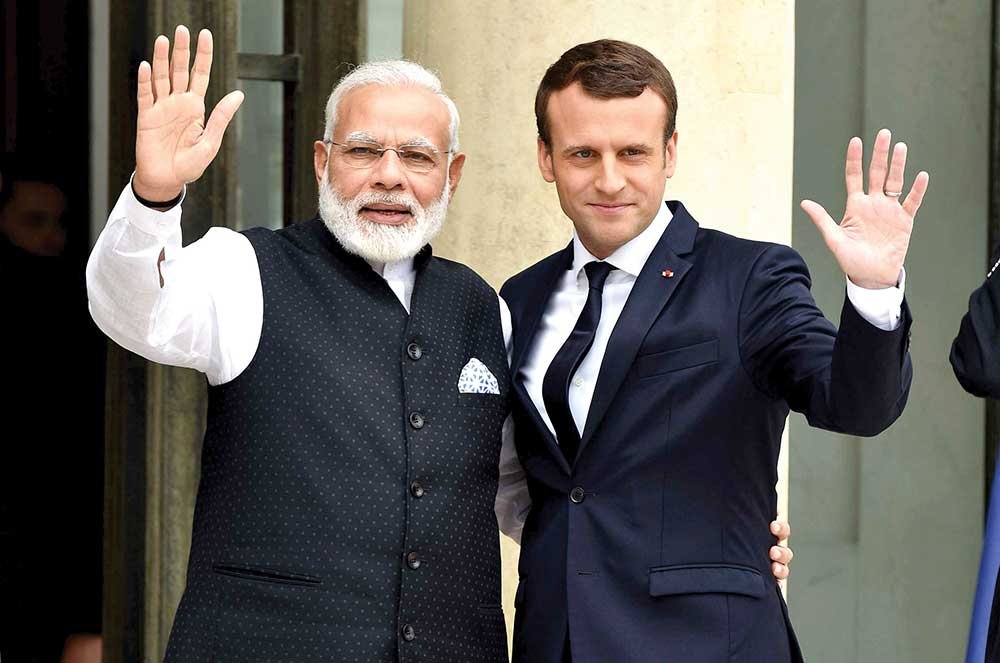
The current global volatility and leadership vacuum, therefore, presents an unprecedented opening for India to step forward — not as a hegemon seeking dominance, but as a strategic playmaker offering a new paradigm of leadership grounded in cooperation with all countries.
The international order established after WW II was based on two pillars: first, the military and economic might of the United States, and second, a liberal and rules-based framework for peace, trade, and multilateralism. However, this order is now under strain. China and other nations have challenged the foundation of this system
India as a Global Swing State
The concept of a “global swing state” is essential to grasping India’s distinctive and increasingly influential role in international affairs. Unlike traditional superpowers that dominate global politics through overwhelming military or economic might, a swing state wields influence precisely because of its ability to pivot between competing powers and shape outcomes through strategic choices. American policy experts Richard Fontaine and Daniel M Kliman have aptly described India as the quintessential global swing state — an actor whose decisions and alignments could decisively alter the trajectory of world affairs in the coming decades.
This characterisation is far from mere diplomatic flattery or theoretical abstraction. It is rooted in tangible geopolitical, economic and demographic realities that confer upon India a unique leverage. The country’s vast population, rapidly expanding economy and strategic geographic location at the crossroads of South Asia, Central Asia and the Indo-Pacific region grant it a centrality that few other nations possess. Moreover, India’s longstanding commitment to strategic autonomy — eschewing rigid alliances in favour of flexible, interest-based partnerships — allows it to navigate complex global rivalries with agility.
As a swing state, India holds the power to influence critical issues ranging from regional security and trade to climate action and technological governance. Its choices can tip the balance in global institutions, shape emerging norms and foster cooperation or competition among great powers. In an era marked by uncertainty and shifting alliances, India’s role as a global swing state is not only plausible but increasingly indispensable for maintaining a stable and inclusive international order.
Demographics and Economic Potential
With over 1.4 billion people, India has surpassed China as the world’s most populous country. Its demographic dividend — characterised by a young, increasingly skilled workforce — provides a powerful engine for economic growth and innovation. Its economy is currently the fourth largest globally in nominal terms and is expected to become the third largest by the early 2030s, surpassing Germany. This growth trajectory is supported by reforms in infrastructure, digitalisation, manufacturing and services.
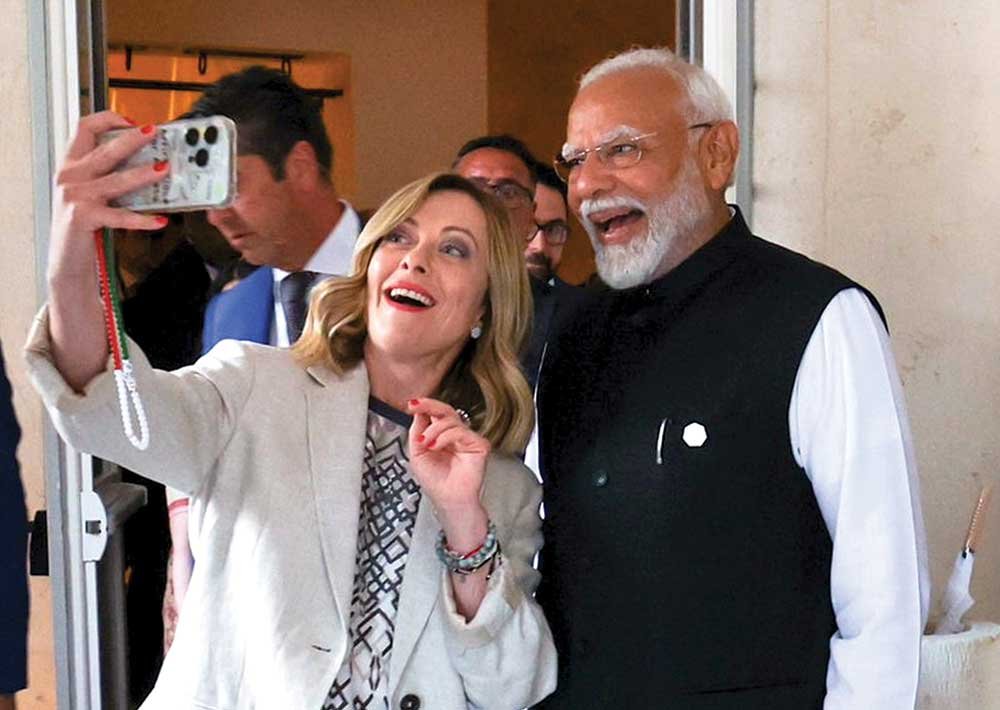
India’s expanding middle class and consumer market make it an attractive destination for investment and trade. Moreover, the country’s commitment to sustainability and renewable energy, as evidenced by its leadership in the International Solar Alliance, aligns with global priorities on climate change. India walks the talk.
The current global volatility and leadership vacuum presents an unprecedented opening for India to step forward, not as a hegemon, but as a strategic player offering a new paradigm of leadership grounded in cooperation with all countries
Emerging Strategic Playbook
India’s strategic posture is evolving from a traditionally cautious, status quo approach to a more assertive and proactive one. This transition is evident in both policy and practice.
Operational Readiness and Force Projection: Operation Sindoor signals India’s growing willingness to project power and manage regional contingencies. This builds on precedents like Operation Raahat in Yemen, where India successfully evacuated hundreds of foreign nationals amidst conflict.
India’s expanding military capabilities, including the modernisation of its navy and air force, reflect an intent to secure its maritime interests and assert influence in the Indo-Pacific. The development of indigenous platforms such as the Tejas fighter jet, the Arihant-class nuclear submarine and the induction of advanced missile systems demonstrates a commitment to self-reliance in defence.
Doctrinal Clarity and Challenges: Despite these advances, India’s strategic doctrine remains somewhat opaque. While strategic ambiguity offers flexibility, it can undermine deterrence and credibility. Clear articulation of red lines, response mechanisms, and strategic objectives is vital for both domestic confidence and international signalling.
Information Warfare and Narrative Shaping: In the contemporary era, conflict extends beyond kinetic warfare to include cyber operations, disinformation campaigns and narrative battles. India must enhance its capabilities in information warfare to defend against cyber threats and proactively shape international opinion. For instance, during Operation Sindoor, India won the battles, leaving Pakistan’s defences in tatters, but Pakistan’s info warfare fooled most of the global media.
India’s cultural diplomacy, digital outreach and fact-based narrative projection — exemplified by platforms like the CoWIN vaccine portal — have demonstrated potential. Expanding these efforts through coordinated digital influence operations and strategic communication can amplify India’s soft power.
Defence Modernisation: The ‘Make in India’ initiative aims to reduce dependence on foreign arms imports and boost indigenous defence manufacturing. While progress has been made, critical gaps remain in technology, supply chains and innovation ecosystems. Bridging these gaps is essential for sustained strategic autonomy. Partnerships with countries such as the US, France, Israel and Japan for technology transfer and joint development can accelerate modernisation while nurturing domestic capabilities.
India’s leadership must internalise a shift from a reluctant participant to a proactive shaper of global norms and institutions. It must invest in doctrinal clarity, defence modernisation, information warfare capabilities and diplomatic agility
Foreign Policy Reset
India’s foreign policy is undergoing a quiet but determined reset, moving from Cold War-era non-alignment to a more pragmatic multi-alignment strategy, often described as Strategic Autonomy 2.0.
Indo-Pacific Engagement: India’s maritime turn is evident in its active participation in the QUAD alongside the United States, Japan and Australia, aimed at promoting a free, open and inclusive Indo-Pacific. Trilateral dialogues such as India-France-UAE and initiatives like the Indo-Pacific Oceans Initiative reflect India’s commitment to regional security, maritime domain awareness, and sustainable development.
G20 Presidency and Global South Leadership: India’s presidency of the G20 in 2023 marked a milestone in its global leadership. It emphasised integrating the voices of the Global South, advocating for equitable vaccine distribution, climate finance and debt relief. This normative balancing act reinforced India’s image as a champion of developing countries’ interests.
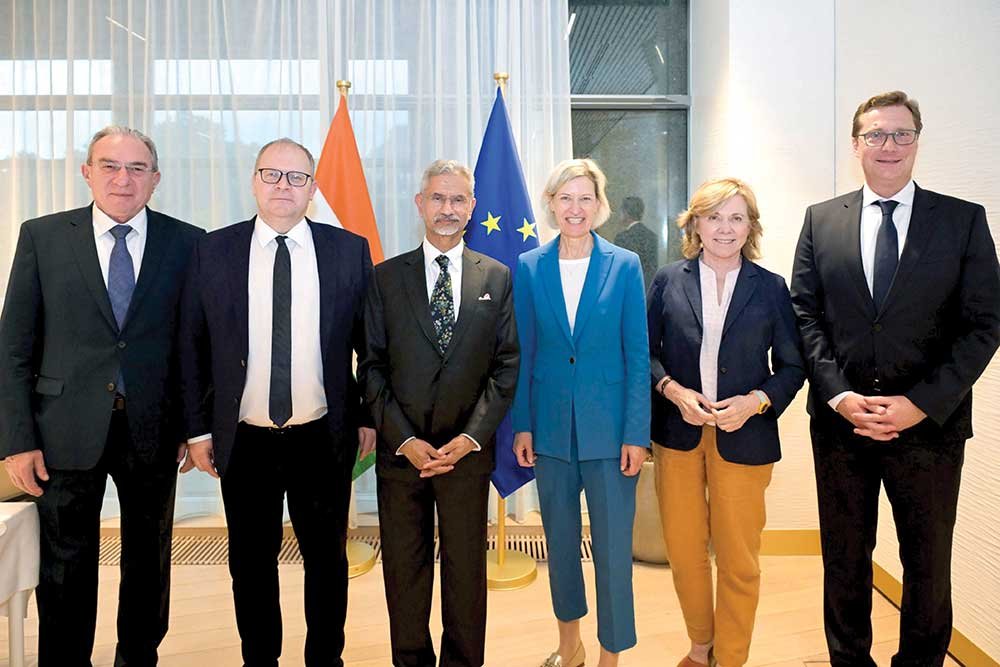
West Asia Outreach: Diplomatic agility is also visible in the West Asia policy. Balancing relations with Israel, Iran and the Gulf Cooperation Council (GCC) states amidst overlapping crises in the Middle East demonstrates India’s nuanced and pragmatic approach. This outreach secures energy supplies, supports the Indian diaspora, and enhances strategic partnerships.
Russia-Ukraine Dilemma: New Delhi’s response to the Russia-Ukraine conflict illustrates its calibrated diplomacy. While condemning civilian casualties and advocating for peace, India has maintained strategic energy and defence ties with Russia, reflecting its commitment to strategic autonomy and realpolitik.
Diverse diplomatic portfolio: India is a member of BRICS, the Shanghai Cooperation Organisation (SCO), the G20 and the QUAD, among others. This allows India to engage with a broad spectrum of countries and coalitions, bridging the Global North and South.
Strategic autonomy: The refusal to be locked into rigid alliance structures gives India the latitude to shape global norms and outcomes rather than merely reacting to them. This flexibility enhances India’s credibility as a swing state capable of balancing competing interests and fostering dialogue.
Will the World Accept India’s Leadership?
The global middle powers and the Global South are engaged in a complex hedging game amid great-power rivalries and regional conflicts. With the United States and China locked in strategic competition, Russia embroiled in Ukraine, and the Middle East volatile, there is no clear hegemonic successor or stable concert of powers.
Appeal to the Global South: India’s leadership is attractive to the Global South because it lacks colonial baggage and the conditionality-heavy assistance associated with Western powers. It’s South-South cooperation, climate action initiatives and technology sharing, such as the CoWIN portal’s global outreach, resonate deeply with developing countries seeking equitable partnerships.
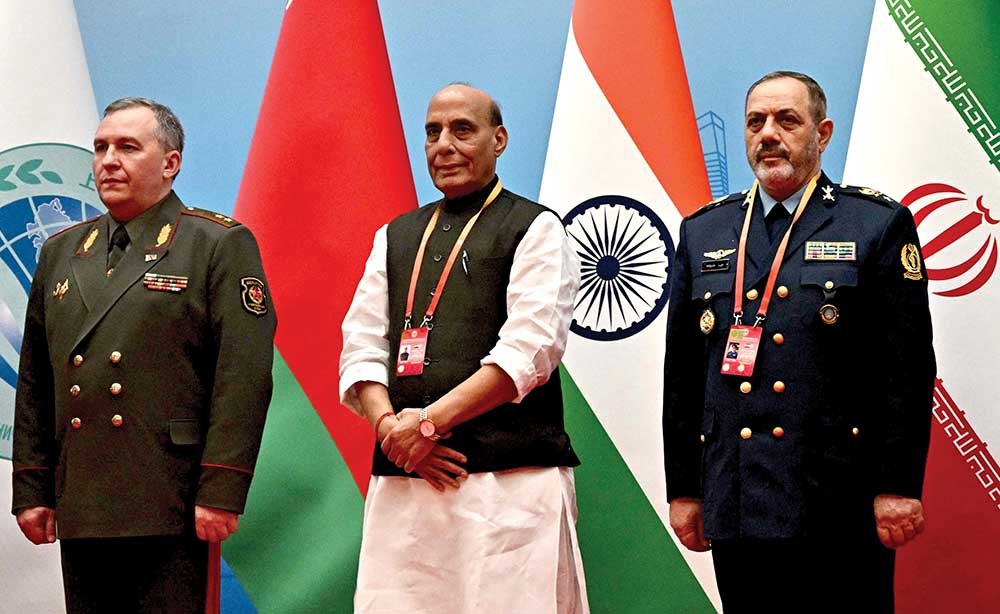
Value to Western Allies: While not a formal ally, India is an indispensable partner for Western democracies. Its democratic credentials, large market, and role as a strategic counterbalance to China make it a critical node in the emerging global architecture.
Regional Powers’ Alignment: Countries like the UAE, Indonesia, Japan and Brazil increasingly align with India’s worldview of decentralised global governance, a rules-based order without Western imposition and inclusive development. This growing convergence enhances India’s legitimacy as a strategic player.
Tightrope of Leadership: Acceptance of New Delhi’s leadership will depend on its ability to walk a tightrope: maintaining democratic values while ensuring strategic coherence; resisting coercion without alienating partners; and leading without slipping into hegemonism. India’s pluralistic ethos and diplomatic finesse will be tested in this endeavour.
While progress has been made, critical gaps remain in technology, supply chains and innovation ecosystems. Bridging these gaps is essential. Partnerships with the US, France, Israel and Japan for technology transfer and joint development can accelerate modernisation while nurturing domestic capabilities
From Hesitant Power to Strategic Player
India’s rise is neither inevitable nor uncontested. It faces significant internal and external challenges, including economic disparities, infrastructural deficits and complex geopolitical rivalries. Yet, the global order today does not require another hegemon imposing dominance but a strategic playmaker capable of catalysing cooperation, managing rivalries and anchoring order without coercion.
India’s civilisational ethos, economic momentum, strategic centrality and democratic vibrancy uniquely position it to fulfil this role. To do so, the country’s leadership must internalise a shift from a reluctant participant to a proactive shaper of global norms and institutions. It must invest in doctrinal clarity, defence modernisation, information warfare capabilities and diplomatic agility.
The future world order may not belong to traditional superpowers but to those who can bridge divides, balance interests and build enduring coalitions. India’s moment has arrived — not merely for its own ascent but for a world in search of stable, just and non-hegemonic leadership.
–The writer is a globally cited defence analyst based in New Zealand. The views expressed are of the writer and do not necessarily reflect the views of Raksha Anirveda

